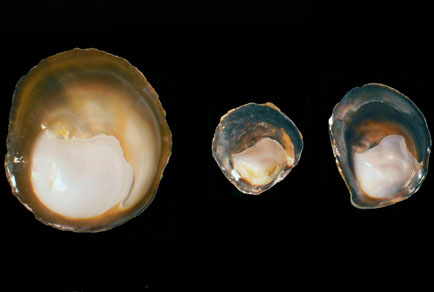Abstract
Crepipatella occulta n. sp. is described from the intertidal zone in northern Chile. This species is morphologically cryptic with two other Crepipatella species from Chile, Crepipatella dilatata (Lamarck, 1822) and Crepipatella peruviana (Lamarck, 1822) (a senior synonym of C. fecunda), with respect to adult shell morphology and anatomy. However, Crepipatella occulta is clearly distinguishable from both of them on the basis of embryonic development. It can be distinguished from Crepipatella peruviana, a planktotroph, and Crepipatella dilatata, a direct developer with uncleaved nurse eggs, because it has direct devel-opment with developing nurse embryos that are consumed before the juveniles hatch. Genetic data from DNA sequences also support the distinct status of this species, and show that the South African species C. capensis (Quoy & Gaimard, 1832–33) is more closely related to C. dilatata and C. peruviana than is C. occulta. In addition Crepipatella occulta displays diagnostic alleles in 14 allozyme loci when compared with the other two co-occuring Chilean species in northern Chile. Morphologically, Crepipatella occulta n. sp. does not attain the large size often observed in C. peruviana, and it typically has a shiny dark chest-nut or chocolate shell interior.

